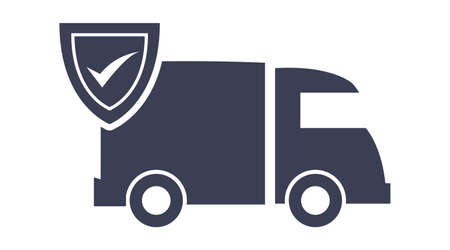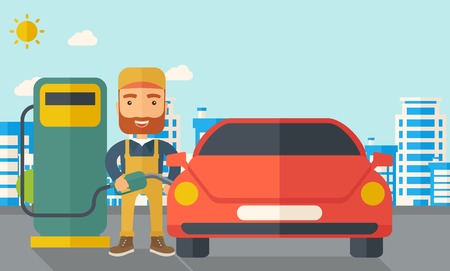Understanding Uninsured/Underinsured Motorist Coverage (UM/UIM)
When you’re driving in the United States, you may assume that everyone on the road has enough car insurance to cover damages if there’s an accident. Unfortunately, that’s not always the case. This is where Uninsured and Underinsured Motorist Coverage (often called UM/UIM) comes into play. Let’s break down what this coverage means, how it works, and why it’s different from other types of auto insurance.
What Is UM/UIM Coverage?
UM/UIM coverage is an add-on to your auto insurance policy that protects you financially if you’re in an accident with a driver who either doesn’t have any insurance (uninsured) or doesn’t have enough insurance to pay for your losses (underinsured). It helps pay for medical bills, lost wages, and sometimes even property damage when the at-fault driver can’t cover your expenses.
How Does UM/UIM Work?
If you get into an accident caused by another driver and they don’t have insurance or their coverage isn’t enough to pay all your costs, UM/UIM coverage steps in. Instead of chasing after someone who may not be able to pay, your own insurance company covers the difference—up to your policy limits. This way, you’re not left dealing with big bills just because someone else was irresponsible.
UM/UIM vs Other Types of Auto Insurance
| Type of Insurance | Covers Your Damages When… | Main Focus |
|---|---|---|
| Liability Insurance | You cause an accident | Pays for others’ injuries & property damage |
| Collision Insurance | Your car is damaged in a crash (no matter who’s at fault) | Pays for repairs to your car |
| Comprehensive Insurance | Your car is damaged by non-crash events (theft, fire, etc.) | Pays for non-collision damages to your car |
| Uninsured/Underinsured Motorist (UM/UIM) | The at-fault driver has little or no insurance | Pays for your injuries & losses when the other driver can’t pay |
As you can see, while most types of auto insurance focus on covering damage you cause or damage to your own vehicle, UM/UIM coverage specifically protects you from the risks of sharing the road with uninsured or underinsured drivers—a real concern in America today.
2. The Prevalence of Uninsured and Underinsured Drivers in America
Uninsured and underinsured drivers are a significant concern across the United States. While most states require drivers to carry at least a minimum amount of auto insurance, many people still take to the roads without proper coverage. Understanding just how common this is can help explain why uninsured/underinsured motorist coverage is so important for every driver today.
National Statistics on Uninsured Drivers
According to recent studies from organizations like the Insurance Research Council (IRC), about 1 in 8 drivers in America is uninsured. That means millions of people are driving without any protection to cover damages they might cause in an accident. Even more concerning, a large portion of insured drivers only carry the state-required minimum—often not enough to pay for serious injuries or property damage.
Percentage of Uninsured Drivers by State
| State | % of Uninsured Drivers |
|---|---|
| Mississippi | 29% |
| Michigan | 25% |
| Tennessee | 23% |
| Florida | 20% |
| California | 16% |
| Maine | 5% |
| New York | 6% |
| Massachusetts | 4% |
The table above shows that rates of uninsured drivers vary widely depending on where you live. Southern states like Mississippi and Tennessee tend to have the highest percentages, while Northeastern states such as Massachusetts and Maine have some of the lowest.
Regional Variations and Trends
The reasons behind these regional differences are complex. In some areas, higher poverty rates and the high cost of insurance make it difficult for people to afford coverage. Other times, lack of enforcement or awareness leads to more uninsured drivers. Additionally, some states only require very low liability limits, which means even “insured” drivers may not have enough coverage if they cause a major accident.
Key Trends Across the U.S.
- The South and Southwest: These regions generally report the highest rates of uninsured drivers.
- The Northeast: Most states in this area have strict laws and lower rates of uninsured motorists.
- Larger Cities: Urban centers often see more underinsured drivers due to high living costs.
- Evolving Laws: Some states are working on stricter penalties and better enforcement to lower their uninsured rates over time.
No matter where you live, there’s always a risk that you could be involved in an accident with someone who doesn’t have adequate insurance. That’s why having your own uninsured/underinsured motorist coverage can be a financial lifesaver when you need it most.

3. Financial and Legal Risks of Not Having UM/UIM Coverage
Many drivers in the U.S. believe that having standard auto insurance is enough to keep them financially secure after an accident. However, if you’re hit by someone who doesn’t have insurance (uninsured) or doesn’t have enough insurance (underinsured), you could face serious financial and legal headaches. Uninsured/Underinsured Motorist (UM/UIM) coverage helps protect you from these risks.
Out-of-Pocket Expenses Can Add Up Fast
If you get into an accident caused by a driver with little or no insurance, your own expenses can pile up quickly. This includes medical bills, car repairs, lost wages, and even pain and suffering. Without UM/UIM coverage, you might have to pay these costs yourself—even though the accident wasn’t your fault.
| Expense Type | Without UM/UIM Coverage | With UM/UIM Coverage |
|---|---|---|
| Medical Bills | You pay out of pocket | Covered up to policy limits |
| Vehicle Repairs | You pay or use your own collision coverage (with deductible) | Covered up to policy limits |
| Lost Wages | No compensation unless you sue and win | Covered up to policy limits |
| Pain & Suffering | Difficult to recover without successful lawsuit | Often included in coverage |
Legal Challenges After an Accident
Even if you decide to take legal action against the at-fault driver, it can be difficult and time-consuming. Many uninsured or underinsured drivers simply don’t have the assets or income for you to collect any significant compensation—no matter what the court decides. With UM/UIM coverage, you can avoid lengthy court battles and get the support you need directly from your own insurance company.
Common Legal Issues Without UM/UIM Coverage:
- Expensive lawsuits with no guarantee of payment from the other driver.
- Delays in receiving funds for medical treatment or vehicle repairs.
- The stress of handling legal proceedings while recovering from injuries.
Gaps in Protection That Leave You Vulnerable
Standard liability insurance only covers damages you cause to others—not what happens if someone else hits you and can’t pay for your losses. Without UM/UIM coverage, there’s a real gap in your protection that could cost thousands—or even tens of thousands—of dollars.
Why UM/UIM Coverage Matters:
- Makes sure your expenses are covered even when the other driver can’t pay.
- Saves you from financial hardship after an accident that wasn’t your fault.
- Adds peace of mind every time you’re on the road.
4. How UM/UIM Coverage Protects You and Your Family
Everyday Scenarios Where UM/UIM Makes a Difference
Uninsured/Underinsured Motorist (UM/UIM) coverage is more than just another line on your insurance policy—it’s a real safety net for you and your loved ones. In the United States, even though auto insurance is required by law in most states, millions of drivers are either uninsured or don’t have enough coverage to pay for the damages they cause. Let’s break down some real-life situations where UM/UIM coverage can make all the difference.
Common Situations Protected by UM/UIM Coverage
| Scenario | How UM/UIM Coverage Helps |
|---|---|
| You’re hit by an uninsured driver | Your medical bills, lost wages, and car repairs are covered up to your policy limits—even if the at-fault driver has no insurance. |
| The at-fault driver doesn’t have enough insurance | If their liability limits don’t cover your costs, UIM steps in to pay the difference, so you aren’t left paying out-of-pocket. |
| Hit-and-run accident | If the other driver leaves the scene and can’t be identified, UM coverage helps pay for your injuries and damages. |
| You’re injured as a pedestrian or cyclist by a car with no (or low) insurance | Your UM/UIM coverage can apply even if you weren’t in your own vehicle during the accident. |
Protecting Your Finances—and Your Future
An unexpected accident can be financially devastating. Medical bills, rehab costs, lost time from work, and car repairs add up fast. Without proper coverage, you could face significant financial strain. UM/UIM coverage is an essential part of responsible financial planning because it:
- Covers gaps left by others’ lack of insurance: Even if you drive safely and follow the law, not everyone else does. This coverage fills in those gaps.
- Keeps your savings safe: Instead of draining your emergency fund or going into debt after an accident, your insurance steps in.
- Provides peace of mind: Knowing you and your family are protected means one less thing to worry about on busy American roads.
Why It Matters in Today’s America
The reality is that not all drivers carry adequate insurance—some estimates say 1 in 8 drivers nationwide are uninsured. With rising healthcare and repair costs, being prepared with UM/UIM coverage isn’t just smart; it’s necessary. For families who rely on their vehicles every day—to get to work, school, or run errands—this type of protection provides vital security against life’s uncertainties.
5. Common Myths and Misconceptions About UM/UIM Coverage
When it comes to uninsured and underinsured motorist (UM/UIM) coverage, there are several misunderstandings that often lead drivers to skip this essential protection. Let’s clear up some of the most frequent myths so you can make informed decisions about your auto insurance.
Myth #1: “My Health Insurance or Collision Coverage Is Enough”
Many people believe that if they have health insurance or collision coverage, they don’t need UM/UIM coverage. However, these policies don’t offer the same protection:
| Type of Insurance | What It Covers | What It Misses |
|---|---|---|
| Health Insurance | Medical bills from injuries | No coverage for lost wages, pain & suffering, or car repairs |
| Collision Coverage | Repairs to your car after an accident | No coverage for medical costs, lost income, or damages from uninsured drivers |
| UM/UIM Coverage | Bodily injury, medical costs, lost wages, pain & suffering, and sometimes property damage from accidents caused by uninsured/underinsured drivers | N/A — specifically designed for these gaps |
Myth #2: “All States Require UM/UIM Coverage”
This is a common misconception. Not every state mandates UM/UIM coverage. In fact, requirements vary widely across the U.S. Here’s a quick overview:
| State Type | UM/UIM Requirement? | What This Means for You |
|---|---|---|
| Some States (e.g., New York, Illinois) | Required by law | You must have at least the minimum UM/UIM coverage amount set by the state. |
| Other States (e.g., California, Florida) | Optional | You can decline this coverage in writing, but you may be left unprotected if hit by an uninsured driver. |
| A Few States (e.g., New Hampshire) | No auto insurance required at all! | If you do buy insurance, UM/UIM may still be available as an add-on. |
Myth #3: “UM/UIM Only Applies to Car Accidents”
This isn’t always true. In many cases, UM/UIM coverage can protect you even if you’re a pedestrian or cyclist hit by an uninsured or underinsured driver. It can also cover passengers in your vehicle.
Main Takeaway:
Don’t let these common myths leave you vulnerable. UM/UIM coverage fills important gaps that other types of insurance simply don’t address. Understanding what’s actually covered helps ensure you and your loved ones are protected on American roads today.
6. Tips for Reviewing and Upgrading Your Auto Insurance Policy
Why Regularly Reviewing Your Coverage Matters
Your life changes—so should your insurance policy. Many drivers set up their auto insurance once and forget about it, but that could leave you underprotected, especially when it comes to Uninsured/Underinsured Motorist (UM/UIM) coverage. With the high number of uninsured drivers on American roads today, making sure you have enough UM/UIM coverage is more important than ever.
How to Assess If You Have Enough UM/UIM Coverage
Start by checking your current auto policy. Look at the UM/UIM section and see how much protection you have. Ask yourself these questions:
- Would this amount be enough if I was hit by an uninsured or underinsured driver?
- Does my state require minimum UM/UIM coverage, and is my policy just meeting the minimum?
- Have my financial responsibilities changed (new car, home, family)?
Coverage Comparison Table
| Coverage Type | State Minimum | Recommended Amount | What It Protects |
|---|---|---|---|
| Uninsured Motorist Bodily Injury (UMBI) | $25,000/$50,000* | $100,000/$300,000+ | Your medical bills if hit by an uninsured driver |
| Underinsured Motorist Bodily Injury (UIMBI) | Not always required | $100,000/$300,000+ | Your expenses if the other drivers insurance is too low |
| Uninsured Motorist Property Damage (UMPD) | $15,000* | $25,000 or more | Your car repair costs after a crash with an uninsured driver |
*Varies by state; check your local requirements.
Steps to Upgrade Your Protection
- Contact Your Agent: Ask them to explain your current UM/UIM limits in simple terms.
- Get Quotes for Higher Limits: Increasing UM/UIM coverage is usually affordable compared to other upgrades.
- Bundle Policies: Combining home and auto can sometimes lower your overall premium, making higher coverage more affordable.
- Review Annually: Life changes fast—review your policy every year or after major life events.
Questions to Ask Your Insurance Provider
- If I’m injured by an uninsured driver, what’s the maximum my policy will pay?
- If my car is totaled and the at-fault driver has no insurance, how much will I get?
- How much extra does increasing my UM/UIM coverage cost per month?
- Are there discounts for safe driving or bundling policies?
A Simple Rule of Thumb:
If your current UM/UIM coverage would not cover all your medical bills or replace your car in a worst-case scenario, consider raising your limits. Peace of mind is worth a few extra dollars a month.


